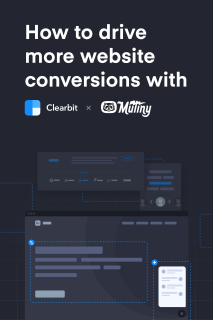Chapter 5
4 minutes
Website personalization strategies from Livestorm and Dropbox DocSend
Let’s look at how experts in the space are building high-converting personalization playbooks today. Keep reading to learn how Livestorm and Dropbox DocSend drove more conversions by defining their goals, building audiences, and implementing unique personalization experiences.
Livestorm
Livestorm is a video engagement platform that helps you manage meetings, webinars, and virtual events from start to finish.
Challenges
Livestorm sees a high volume of monthly website visitors from a variety of roles and industries. This posed challenges for the team in making sure they were showing the right message at the right time to the right people. “It is a big plus in terms of the total addressable market, but this comes with some complexity in messaging and positioning the product properly for all these audiences,” says Thibaut Davoult, Head of Growth at Livestorm.
Additionally, the Livestorm team was struggling to convert enterprise companies at high annual contract values. Since Livestorm offers a self-serve plan, many enterprise companies would come to the site and sign up for lower-cost plans.
Goals
Based on the challenges above, Thibaut and the team wanted to:
- Increase conversions by providing tailored experiences based on industry
- Drive more enterprise deals at a higher ACV
Audience
Using Clearbit Reveal, Thibaut and his team created different audiences to identify and segment visitors by industry (targeting industries like education, technology, and government) and company size (SMB and enterprise).
Personalization experience
Using Mutiny, the Livestorm team shows different experiences based on their industry and company size-specific audiences.
Company size
-
Tailored logos: Different logos are displayed on the homepage based on the size of the company visiting.
-
Copy changes: The copy on the website is designed to reflect the size of the company. For example, an enterprise company is shown a copy focused heavily on security, SSO login, and how to invite multiple team members.
-
Enterprise-specific website changes: If a company has over 10,000 employees, the self-serve plan option is not overtly displayed. Pricing is also hidden from the website for enterprise visitors, which helps the Livestorm sales team direct the conversation and sell at a higher ACV.
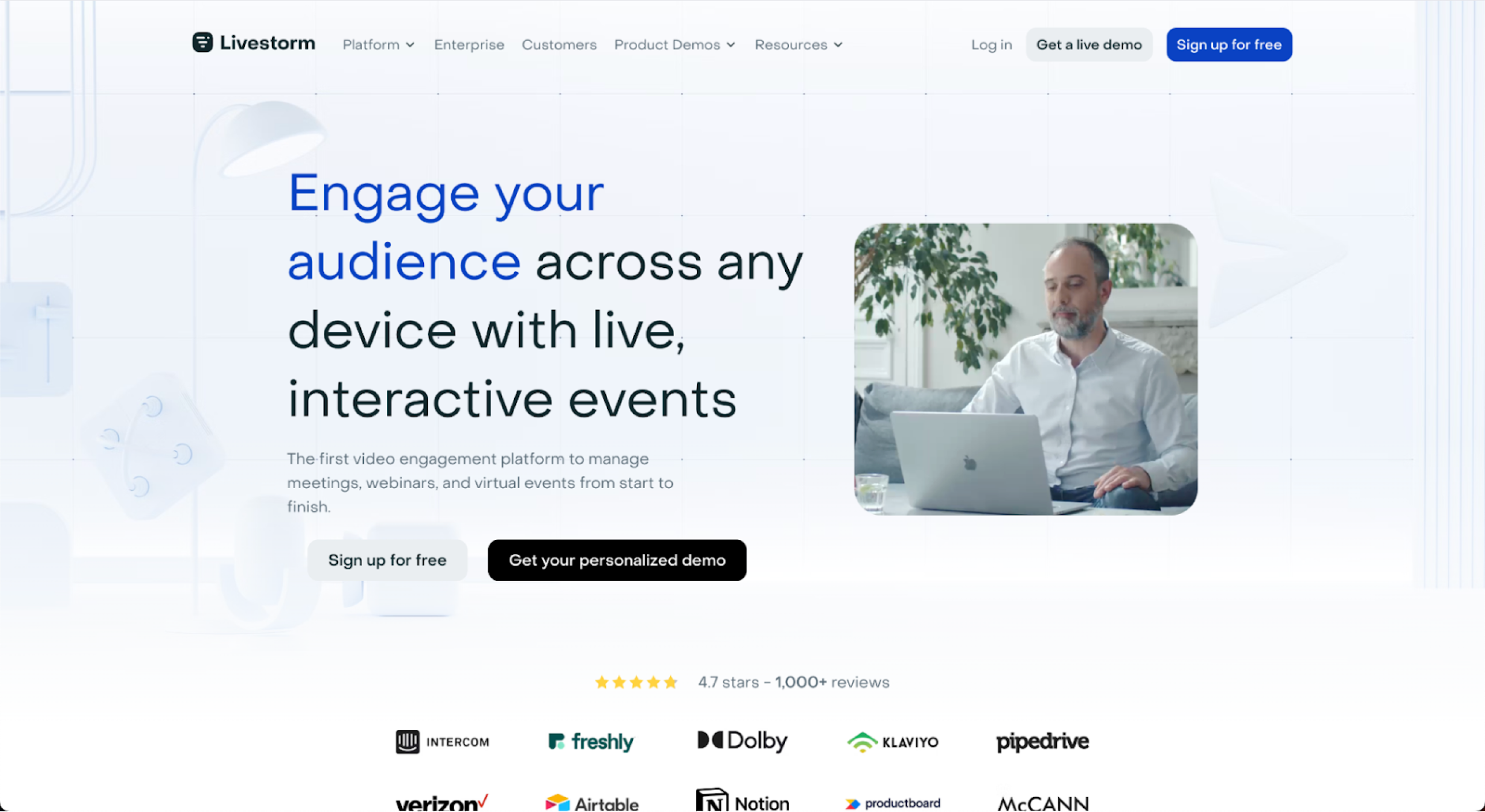
Industry
-
Key features: Different product features are displayed based on the visitor’s industry. For example, breakout room functionality is important to educators, so that feature is highlighted for colleges and universities.
-
Integrations: Different integrations are shown based on the website visitor’s industry. For example, a tech company may see HubSpot and Salesforce highlighted as integration partners.
Results
Improved homepage conversions by 30%
Dropbox DocSend
Dropbox DocSend is a horizontal document analytics tool.
Challenge
Much like Livestorm, the Dropbox DocSend team targets a variety of personas and company sizes, so they needed a way to tailor their messaging.
Goal
Drive more conversions from key segments
Audience
The Dropbox DocSend team segmented their audience in a few different ways before building their personalization experiences.
The team segmented their audience by:
- Employee count (using Clearbit attributes)
- User behavior
- Customer status
Personalization experience
Based on the segments above, the Dropbox DocSend team created three experiences.
By company size: The team customized the hero copy and social proof on their landing pages to show information and customer logos relevant to the company size segment (enterprise or startups).
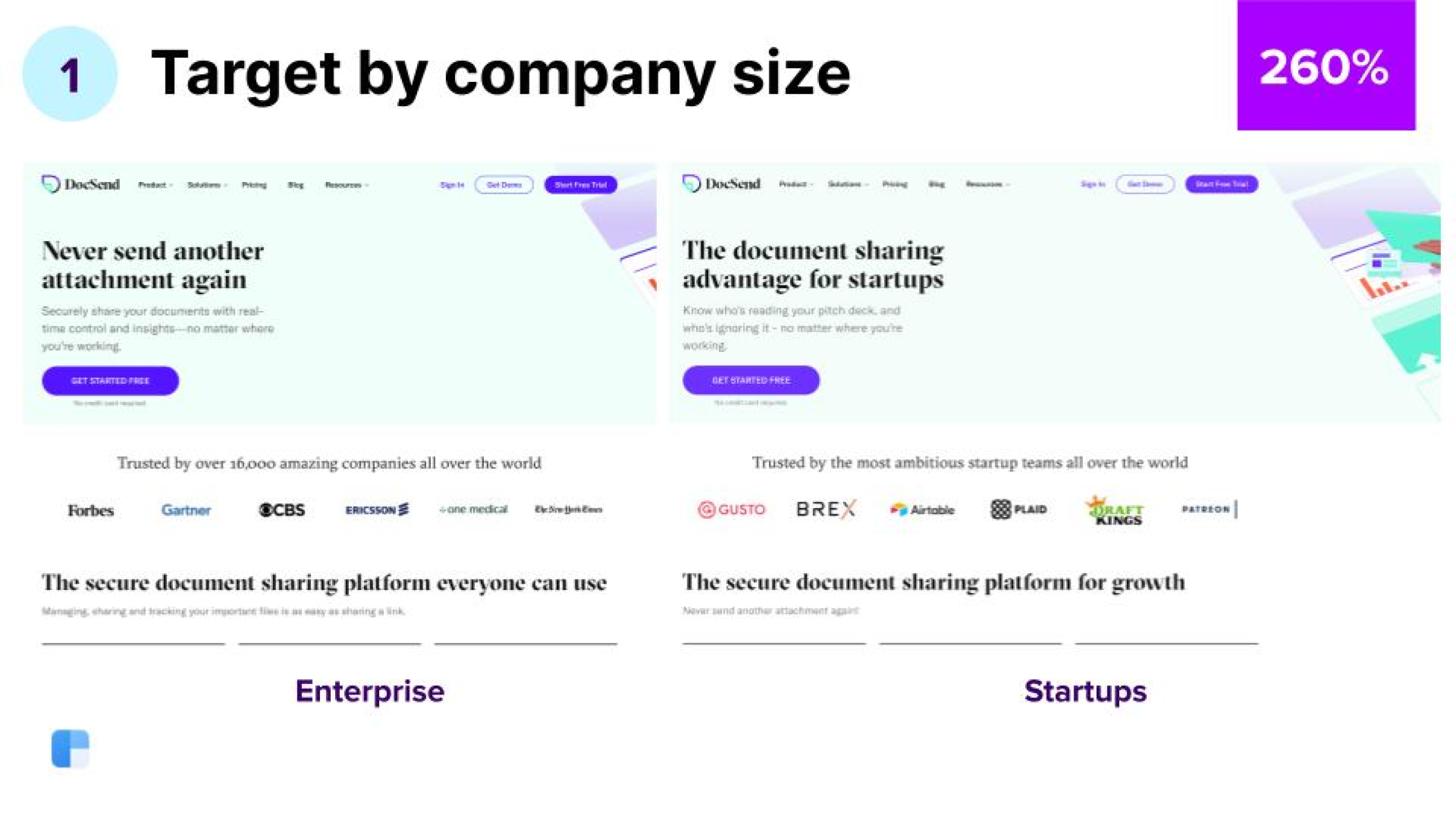
By persona: The team created different experiences and curated their messaging for venture capitalists and sales professionals. The venture capital messaging focused more on managing funds, while the sales-specific messaging was about managing and closing deals.
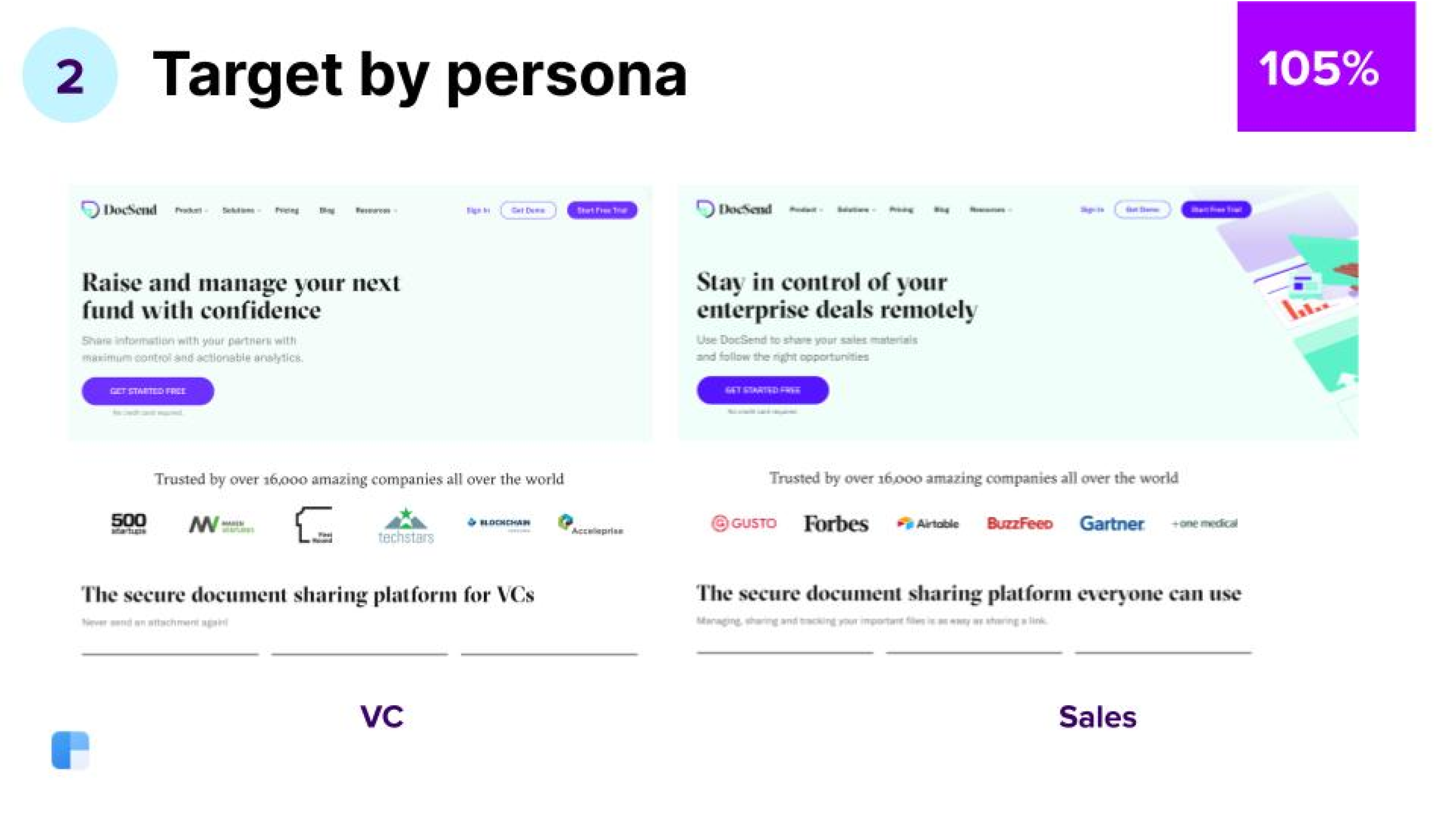
By customer status: After initial personalization tests for their prospects, the team also implemented personalization for their customers. While website personalization can have an impact on prospects, it also can help grow revenue from customers. Using Clearbit and Mutiny, the Dropbox DocSend team personalized the upsell experience for free trial customers. They also created personalized landing pages for current customers using data from their Salesforce instance that flows directly into Mutiny.
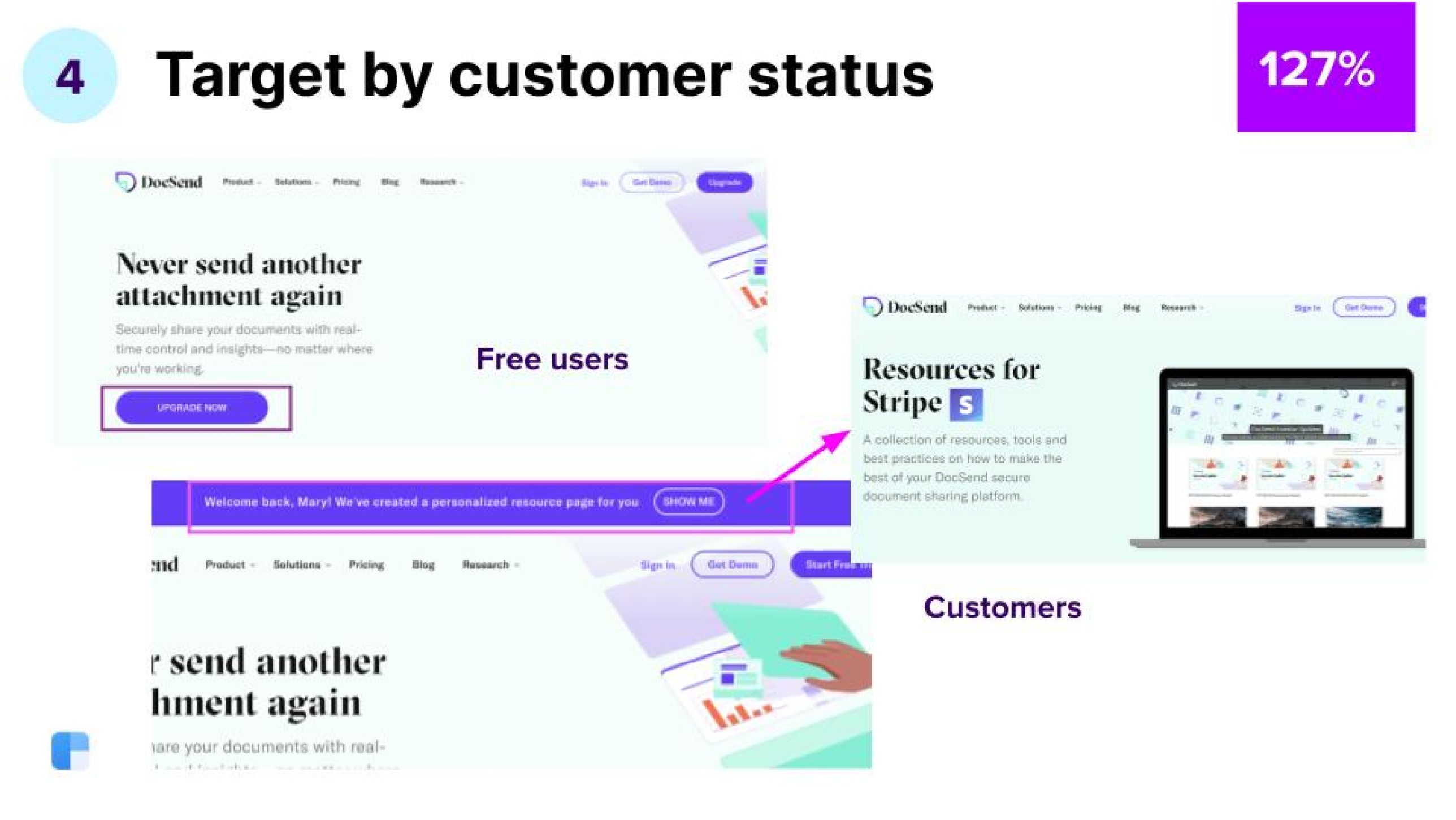
Results
- Targeting by company size resulted in a 260% lift in conversion rate
- Targeting by persona resulted in a 105% lift in conversion rate
- Targeting by customer status resulted in a 127% lift in conversion rate
